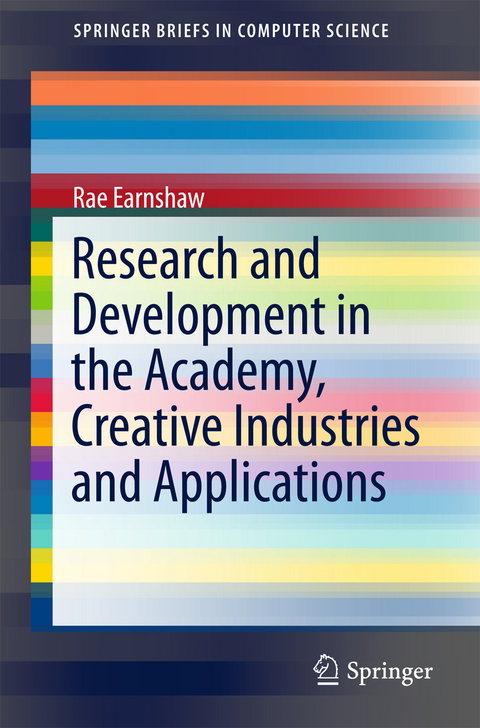
Research and Development in the Academy, Creative Industries and Applications
Springer International Publishing (Verlag)
978-3-319-54080-1 (ISBN)
This book examines how creativity feeds through into typical application areas, and the lessons that can be learned from this. A number of Case Studies in creative and general application domains are included which illustrate how the academy and industry can collaborate to mutual benefit and advantage. It also examines the pros and cons of the collaboration, and what lessons can be learned from successes or failures in aspects of the implementation and delivery.
The academy has played a key role in the past in the research and development of key ideas and patents that have been migrated into successful industrial products and services and continues to do so. A variety of models of interaction between the academy and industry have been developed depending on the circumstances of the institution, its mission, its values, its expertise, and its relationship to the local and cultural environment in which it is situated. These models are reviewed and evaluated.
The process of initial idea through to design and successful implementation is a pipeline. If this process requires the involvement of technology (as is more often the case - as creative applications are increasingly dependent on technology) then there is need to understand how this can efficiently and optimally be done. A number of factors tend to be generic and permeate many application areas (such as bandwidth requirements, use of colour, interaction methods) whilst others are more customized with specialist hardware and software (e.g. shared virtual environments, augmented reality).
Foreword.- Preface.- History and Background: The Development of the Academy and Industry.- Models of Interaction between the Academy and Industry.- Technology Transfer for the Creative Industries and Wider Industrial Applications.- The Entrepreneurial Academician and the Collaborating Industrialist.- Case Studies: Shared Virtual and Augmented Environments for Creative Applications.- Digital Holography as a Creative Medium to Display and Re-interpret Museum Artefacts, Applied to Chinese Porcelain Masterpieces.- Improving the Physical Properties of Materials by Collaboration between Industry and the Academy.- Conclusions and Review of the Case Studies
| Erscheinungsdatum | 25.03.2017 |
|---|---|
| Reihe/Serie | SpringerBriefs in Computer Science |
| Zusatzinfo | XIV, 104 p. 24 illus., 23 illus. in color. |
| Verlagsort | Cham |
| Sprache | englisch |
| Maße | 155 x 235 mm |
| Themenwelt | Mathematik / Informatik ► Informatik ► Betriebssysteme / Server |
| Mathematik / Informatik ► Informatik ► Grafik / Design | |
| Informatik ► Software Entwicklung ► User Interfaces (HCI) | |
| Schlagworte | Computer Applications • Computer Science • Creative Applications • Creative Industries • Creativity • Design and Implementation • Graphical and digital media applications • Information technology: general issues • Interaction Methods • Media Design • User interface design and usability • user interfaces and human computer interaction |
| ISBN-10 | 3-319-54080-7 / 3319540807 |
| ISBN-13 | 978-3-319-54080-1 / 9783319540801 |
| Zustand | Neuware |
| Haben Sie eine Frage zum Produkt? |
aus dem Bereich


